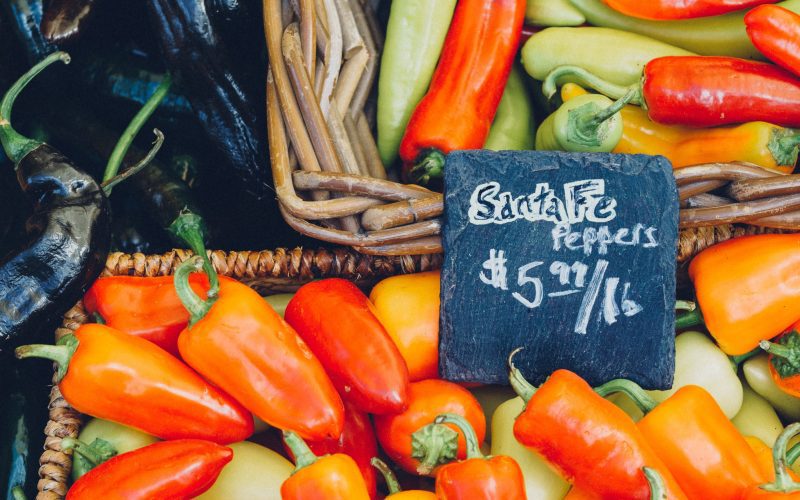Introduction
Food is a fundamental necessity for our survival, but it’s no secret that rising food costs have been affecting both businesses and consumers globally. From farmers to grocery stores, restaurants to households, everyone has felt the impact of these increasing prices. While some may argue that this trend brings benefits, others disagree with the consequences. In this blog post, we’ll examine the pros and cons of rising food costs for both businesses and consumers alike. So sit back, grab your favorite snack (while you still can), and let’s dig into this complex issue!
The Pros of Rising Food Costs for Businesses
As food costs continue to rise, businesses are faced with challenges and opportunities. While the immediate impact may seem negative, there are actually some benefits that can come from this trend.
One of the main pros for businesses is that higher food costs often mean higher prices for consumers. This means increased revenue and profit margins, which can be invested back into the business to improve products or services.
Rising food costs also present an opportunity for businesses to differentiate themselves from competitors by offering unique menu items or sourcing high-quality ingredients. This can help attract a more discerning consumer base willing to pay a premium price for exceptional quality.
Additionally, increasing food costs can encourage businesses to become more efficient in their operations and reduce waste. By carefully tracking inventory and adjusting portion sizes or recipes as needed, businesses can save money while still delivering satisfying meals to customers.
Rising food costs may drive industry-wide innovation in terms of sustainable farming practices and alternative protein sources. This could have long-term benefits not only for individual businesses but also for the entire planet.
While rising food costs certainly pose challenges for businesses in the short term, there are several potential advantages worth considering.
The Cons of Rising Food Costs for Businesses
Rising food costs can have a significant impact on businesses, and unfortunately, it’s not always positive. Here are some cons that businesses may face:
Firstly, higher food costs mean lower profit margins. Restaurants who rely heavily on ingredients such as beef or seafood may find themselves having to raise their prices significantly just to break even. This can lead to customers seeking out more affordable options elsewhere.
Secondly, with rising food costs comes the risk of spoilage and waste. If a restaurant is unable to sell all of its expensive inventory before it goes bad, this can result in financial losses for the business.
Thirdly, businesses may also face increased competition from other establishments who are able to offer cheaper menu items due to lower ingredient costs. This could force some restaurants to close down if they’re unable to keep up.
In addition, companies that supply these ingredients could also raise their prices in response which would affect all parties involved – including the end consumer.
While there may be some pros for businesses when it comes to rising food costs (such as increased demand for locally sourced or sustainable ingredients), there are definitely some downsides that must be considered as well.
The Pros of Rising Food Costs for Consumers
Rising food costs may seem like a negative thing for consumers since it means spending more money on groceries and dining out. However, there are also some potential benefits for consumers when food prices increase.
Firstly, rising food costs can encourage people to make healthier choices. When fruits and vegetables are cheaper than processed foods, people are more likely to buy them and incorporate them into their diets. This can lead to better overall health outcomes in the long run.
Secondly, higher food prices can motivate consumers to be more creative with their meals. Instead of relying on expensive convenience foods or eating out at restaurants all the time, people might start experimenting with new recipes and cooking from scratch more often. This could result in a greater appreciation for home-cooked meals and the satisfaction that comes with making something delicious from scratch.
Increased demand for locally sourced produce could be another benefit of rising food costs. Consumers might turn to farmers markets instead of grocery stores in search of affordable fresh produce options which help support local farmers as well as reducing carbon footprints by decreasing transportation distances between producers and buyers.
While rising food prices may not be ideal for everyone’s budget initially but encouraging healthy habits through dietary changes plus creativity in meal preparation along with promoting sustainability practices should eventually provide a net positive outcome over time.
The Cons of Rising Food Costs for Consumers
Consumers are the ones who feel the most significant impact of rising food costs. As prices climb, it puts a strain on household budgets and leaves less money for other essentials like housing, education, and healthcare.
One of the biggest cons of rising food costs for consumers is that it can lead to malnutrition or undernourishment in some cases. When people can’t afford nutritious foods, they may opt for cheaper options that lack essential vitamins and minerals needed for healthy living.
For low-income families, increasing food prices mean cutting back on quantity or quality. They may start purchasing processed or junk food instead of fresh fruits and vegetables because they are more affordable.
Another disadvantage is inflationary pressure. The rise in food prices can lead to overall inflation as businesses pass along their higher production costs to consumers by raising prices across all categories.
Moreover, when people have less disposable income due to higher food expenses means there’s likely to be a reduction in spending elsewhere. This decrease in consumer spending could negatively affect economic growth since consumption accounts for nearly 70% of GDP (gross domestic product).
While the pros from rising food cost might benefit farmers and store owners; however, this comes with serious consequences for consumers who struggle with affordability issues every day.
Conclusion
To sum up, rising food costs have both pros and cons for businesses and consumers. For businesses, the increased prices of ingredients can lead to higher profits and a chance to innovate new products with unique ingredients. However, it can also result in reduced customer loyalty due to high pricing.
On the other hand, consumers may benefit from higher quality food products as businesses strive to maintain their reputation despite price increases. Additionally, there could be an increase in healthier eating habits as people cut back on expensive junk food options. But unfortunately, low-income households may suffer from increasing prices.
All in all, it is essential for both parties involved – businesses and consumers -to find ways to adapt to these changes while maintaining affordability without compromising quality standards or sustainability practices. By keeping this balance in mind during such times of uncertainty within our economy’s food industry sector will only help us create better options for everyone down the road.












